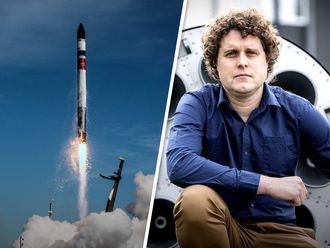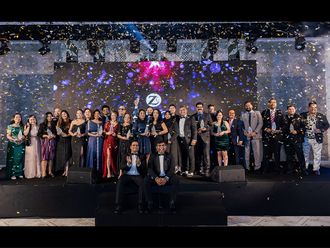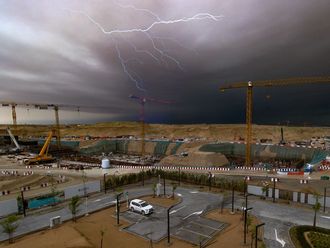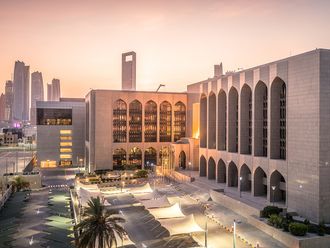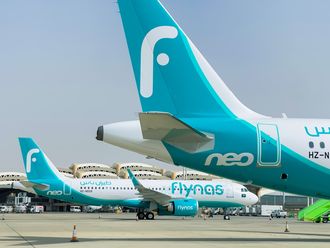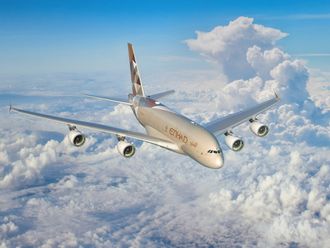Before Taiwanese manufacturing giant Foxconn pledged to spend $10 billion (Dh36 billion) and create 13,000 jobs in Wisconsin, the company made a similar promise in Brazil. At a news conference there, Foxconn officials unveiled plans to invest billions of dollars and build one of the world’s biggest manufacturing hubs in the state of Sao Paulo.
The government had high expectations that the project would yield 100,000 jobs. Six years later, Brazil is still waiting for most of those jobs to materialise.
“The area where Foxconn said it would build a plant is totally abandoned,” said Guilherme Gazzola, the mayor of Itu, one of the cities that hoped to benefit from the project. “They haven’t even expressed an interest in meeting us.”
Foxconn’s experience in Brazil and other parts of the world illustrates how difficult it has been for it to replicate its enormously successful Chinese manufacturing model elsewhere. In China, Foxconn has built vast factories backed by large government subsidies. Its operations — assembling iPhones for Apple, Kindles for Amazon and PlayStations for Sony — employ legions of young assembly-line workers who often toil 60 hours a week for about $2.50 an hour.
Labour protests in China are rare or quashed swiftly. But the model does not translate easily to other countries, where Foxconn must navigate different social, political and labour conditions. In Brazil, Foxconn’s plans unravelled quickly.
The administration that had wooed the company was soon swept from power amid corruption allegations and an impeachment vote. Some of the tax breaks that had been promised were reduced or abandoned, as economic growth and consumer spending slumped.
Today, Foxconn employs only about 2,800 workers in Brazil. Foxconn does the “big song and dance, bringing out the Chinese dragon dancers, ribbon cuttings, toasts and signature of the usual boilerplate agreements,” said Alberto Moel, an investor and adviser to early-stage tech companies. “Then, when it gets down to brass tacks, something way smaller materialises.”
Foxconn said in a statement that it was committed to investing billions of dollars in building facilities outside China. But the company also said it had been forced to adapt to changing conditions in markets like Brazil, where the economy had stagnated.
“This and the changing needs of our customers that our proposed investments were designed to serve have resulted in scaled-down operations in the country at this time,” the company said in its statement.
With regard to the Wisconsin project, Foxconn has said it plans to build one of the world’s largest manufacturing campuses in the southeastern part of the state. The company expects the buildings that will make up the campus to total 20 million square feet — about three times the size of the Pentagon — and to help transform the region into a major production centre for flat-panel display screens.
Speaker Paul D. Ryan, Republican-Wisconson, called the Foxconn deal a “game changer” that could help spur a manufacturing revival in the Midwest. At the White House in July, President Donald Trump hailed the agreement as a great one for US manufacturing, US workers and “everybody who believes in the concept, in the label, Made in the USA”.
Foxconn has good reason to diversify its manufacturing operations. About 95 per cent of the company’s 1.1 million employees work in China. Building a large workforce elsewhere could reduce the company’s reliance on a single locale, lowering its risk if countries imposed tariffs or other trade barriers on Chinese exports.
But exporting Foxconn’s Chinese strategy is virtually impossible. The global supply chain for electronics remains firmly rooted in Asia, where advantages such as low-cost labour and an abundance of skilled engineers have been crucial to the region’s development as a manufacturing base.
What makes Foxconn’s Chinese operations really hum are the extraordinary level of government subsidies and support, and the sheer scale of those operations. Local governments often finance and build the company’s factories, manage its dormitories and recruit tens of thousands of workers.
Some government officials have gone door-to-door in small counties to recruit workers. The government aid can reach into the billions of dollars.
Foxconn began to shift large-scale production operations beyond China in about 2009, when it opened plants elsewhere in Asia, including Vietnam and India. The company now has factories in the Czech Republic, Hungary and Slovakia, and a large plant in Mexico that employs 18,000 workers.
Different place, same method
When several countries began to require that some components be made locally as a way of encouraging production at home, Foxconn stepped up its efforts to build outside China. And company executives essentially followed the same playbook they had used inside China.
Then reality set in. Labour strikes in India and Vietnam prompted Foxconn’s operations in those countries to be shut down temporarily. Political and economic turmoil in Brazil led the authorities there to scale back some of tax breaks it had offered the company. A plan to invest $1 billion in the construction of a plant in Jakarta, Indonesia, collapsed, partly because Foxconn could not develop the supply chain it had hoped to, according to analysts and government officials.
Foxconn’s plans also fizzled in Pennsylvania. In 2013, the company, which has a small office in Harrisburg, said it intended to build a $30 million factory in the state that could employ 500 workers. The plant has yet to be built.
For Foxconn, the move to Wisconsin offers political benefits. On the campaign trail, Trump skewered China over what he deemed its unfair trade practices. He vowed to force Apple to make its products in the US and said his administration might impose a border tax on imports, raising the prospect of a trade war.
After the election, Foxconn joined a parade of global companies bearing promises. Jack Ma, the executive chairman of Chinese internet giant Alibaba, arrived at Trump Tower in New York and pledged to create 1 million jobs in America. Masayoshi Son, the founder of SoftBank of Japan, said his company would invest $50 billion in the US.
And at around the same time, Foxconn said it was planning to build production facilities in the US.
The Trump administration helped start some of the talks between Foxconn and officials in Wisconsin. Negotiations began in June, and an agreement was reached a month later, with Wisconsin pledging $3 billion in tax breaks and other subsidies over a 15-year period.
Democrats in the state questioned whether the price tag was justified and whether the jobs would materialise. A state analysis, by the non-partisan Legislative Fiscal Bureau, found that taxpayers would not recoup the state’s investment until at least 2042.


